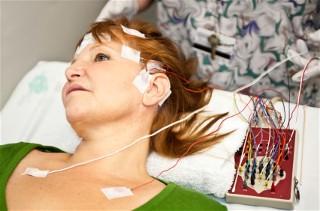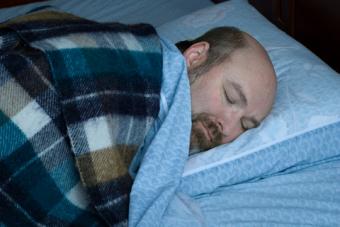
Learning about REM equipment can be beneficial to people who need be be tested for the presence of a sleep disorder.
What Is REM Equipment?
Patients who are required to have a sleep study visit a sleep lab for evaluation. Some evaluations require patients to stay overnight while technicians observe their sleep behavior. Some of the most important behaviors occur during REM sleep. Many occurrences happen during this stage of sleep:
- Paradoxal sleep involves heightened activity in the brain paired with immobile muscles
- Brain waves are as active as they are in a wakeful state
- Dreaming
- Rapid eye movement
Rapid eye movement is the sleep activity that gives the REM cycle its name. REM equipment detects and measures this stage of sleep for evaluation.
Electromyogram
An electromyogram (EMG) is a device used to measure electrical responses in skeletal muscles. The device uses electrodes, which are unobtrusive metal discs strategically placed on the surface of the skin. The electrodes detect muscle and nerve activity, which makes them helpful in detecting conditions like restless leg syndrome but they are also helpful in determining whether a person is experiencing REM sleep. During a polysomnogram, a technician usually puts the electrodes on the patient's chin and along the shin to record impulses in those specific areas.
The piece of REM equipment measures muscle tone during sleep and can show when a person is experiencing paradoxal sleep. In some cases, the electromyogram is used in other areas of the body if other sleep disorders such as periodic limb movement disorder are suspected. In addition, the equipment can be useful in detecting respiratory function and bruxism (teeth grinding).
Electroencephalogram
An electroencephalogram (EEG) is a non-invasive device that measures brain activity. The apparatus can be used when the patient is awake or asleep and it records brain waves through electrodes attached to the patient's scalp. The electrical impulses produced by brain waves travel through the electrodes and the electrodes send the currents to instruments called galvanometers. Galvanometers detect the impulses and are attached to writing instruments that move in accord, creating a visual graph on paper. This piece of REM equipment is helpful in recording brain activity during various stages of sleep. It can determine whether a person is asleep or awake and it can detect brain activity that occurs while a person is experiencing rapid eye movement cycles and dreams.
Low and high amplitude can be indicators of the person's state:
- Awake is low
- Stage 1 of sleep is low
- Stage 2 of sleep is medium
- Stages 3 and 4 of sleep are high
- REM is low
Electro-Oculogram
As its name suggests, rapid eye movement involves significant eye activity during sleep. An electro-oculogram is a device that measures eye movements, which makes it a helpful instrument in identifying REM cycles. A technician uses two electro-oculogram (EOG) channels to measure vertical and horizontal eye movements. Electrodes are placed at the corner or angle on each side of the eye, an area called the canthus. They pick up positive and negative charges within the cornea (positive charge) and the retina (negative charge). The measurements can detect slow rolling eye movements that are typically present when the patient is initially falling asleep. They can also detect the onset of REM sleep cycles as well as its duration. The measurements can tell:
- How long it takes the patient to fall asleep
- The number of REM cycles the patient experiences
- How long each REM cycle lasts
- How long non-REM cycles last
Summary of Rapid Eye Movement Equipment
The three main pieces of equipment used during sleep studies are:
- Electromyogram (EMG) that records skeletal muscle activity
- Electroencephalogram (EEG) that records brain activity
- Electro-Oculogram (EOG) that records eye movement
Together, the REM equipment can help detect a number of sleep disorders in patients who have sleep studies.







